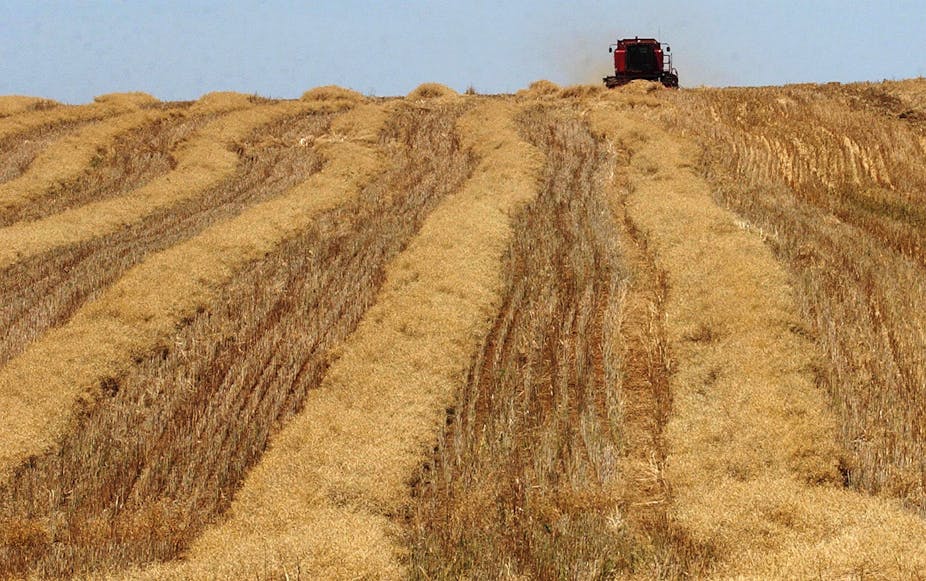Since the beginning of civilisation, humans have depended on organic materials - or “biomass” - for cooking and heat. Many developing countries in Asia and Africa still do. Biofuel or bioenergy is the chemical energy contained in biomass that can be converted into direct, useful energy sources using biological (including food digestion), mechanical or thermochemical processes.
The current liquid biofuels (bioethanol and biodiesel) are mainly produced from first generation feedstocks (such as sugarcane, maize, rapeseed) and constitute only a small fraction (1%) of present transportation energy. Second generation biofuels will come from dedicated perennial energy crops (such as miscanthus, switchgrass, agave, pongamia), and in the near future, hydrogen gas may be produced from algae, bacteria, or artificial photosynthesis to fuel hydrogen-cell powered cars.
Liquid biofuels
Liquid biofuels are most familiar to us. Bioethanol is a substitute for gasoline and biodisesel is a substitute for diesel.
Most cars that are built have internal combustion engines which can only burn liquid fuels. While other types of engines, such as electric and hydrogen fuel cells are being developed, in the meantime, liquid biofuels are the transition renewable alternative to fossil fuels for transport.
According to the International Energy Agency, liquid biofuels account for only 2% of total bioenergy, and they are mainly significant in the transportation sector. Transportation accounts for 28% of global energy consumption and 60% of global oil production, and liquid biofuels supplied only 1% of total transport fuel consumption in 2009.
Globally, liquid biofuels can be classified into three main production sources; maize ethanol from the United States, sugarcane ethanol from Brazil and rapeseed biodiesel from the European Union. There is also a small quantity of palm oil biodiesel from Indonesia.
In 2010, Brazil and the United States produced 90% of the 86 billion litres of global bioethanol and the European Union produced 53% of the 19 billion litres of biodiesel.

In Australia, biodiesel is being produced from used cooking oil (an agricultural by-product), tallow and canola seed; and bioethanol is produced from sugarcane molasses, grain sorghum and waste wheat starch.
Not so sustainable
The first generation of biofuels produced from starches, sugars and oils of agricultural food crops, including maize, sugarcane, rapeseed (including canola) and soybean have faced disfavour for competing with food and feed production.
Hypothetically, if all the main cereal and sugar crops (wheat, rice, maize, sorghum, sugar cane, cassava and sugar beet), representing 42% of global cropland, were to be converted to ethanol, this would correspond to only 57% of total petrol use in 2003, and leave no cereals or sugar for human consumption (although the reduced sugar in the human diet would have health benefits).
These first generation biofuels also have large carbon and water footprints. Greenhouse gas emissions during agricultural production of biofuel crops contribute 34-44% of the greenhouse gas balance of maize ethanol in the United States and more than 80% in pure vegetable oils. In general the water footprint of biofuels is two to five times larger than the water footprint of fossil fuels.
Clearing undisturbed native ecosystems such as rainforest, savanna and grassland for biofuel production also increases net greenhouse gas production due to a change in land use.
The way forward
Due to food and energy security concerns, many countries are promoting biofuel crops that can be grown on land not suited for food production, so that the two systems are complementary rather than competitive.
Second generation biofuels refer to the range of feedstocks (dedicated energy crops such as miscanthus, switchgrass, pongamia, agave, Indian mustard, sweet sorghum, algae, carbon waste), conversion technologies (fast pyrolysis, supercritical water, gasification), and refining technologies (thermo-chemical Fischer-Tropsch methods) used to convert biomass into useful fuels.
For example, Swiss company Clariant opened a ligno-cellulosic plant in Germany in 2012 that can produce up to 1000 tons of cellulosic ethanol from 4500 tons of wheat straw.
Hydrogen is designated as a third generation biofuel, when it is produced from biomass by algae or enzymes. Hydrogen contains three times the energy of petrol on a mass basis and its combustion produces only water, although future technological breakthroughs are needed before hydrogen can be produced economically.
One method of hydrogen production is artificial photosynthesis which involves mimicking natural systems using molecular photocatalytic systems for light-driven water oxidation and hydrogen production.
Artificial photosynthesis was only an academic activity until the development of the first practical artificial leaf. It is claimed to be potentially 10 times more efficient in photosynthesis than a natural leaf, however commercialisation of artificial photosynthesis is yet to be proven.

